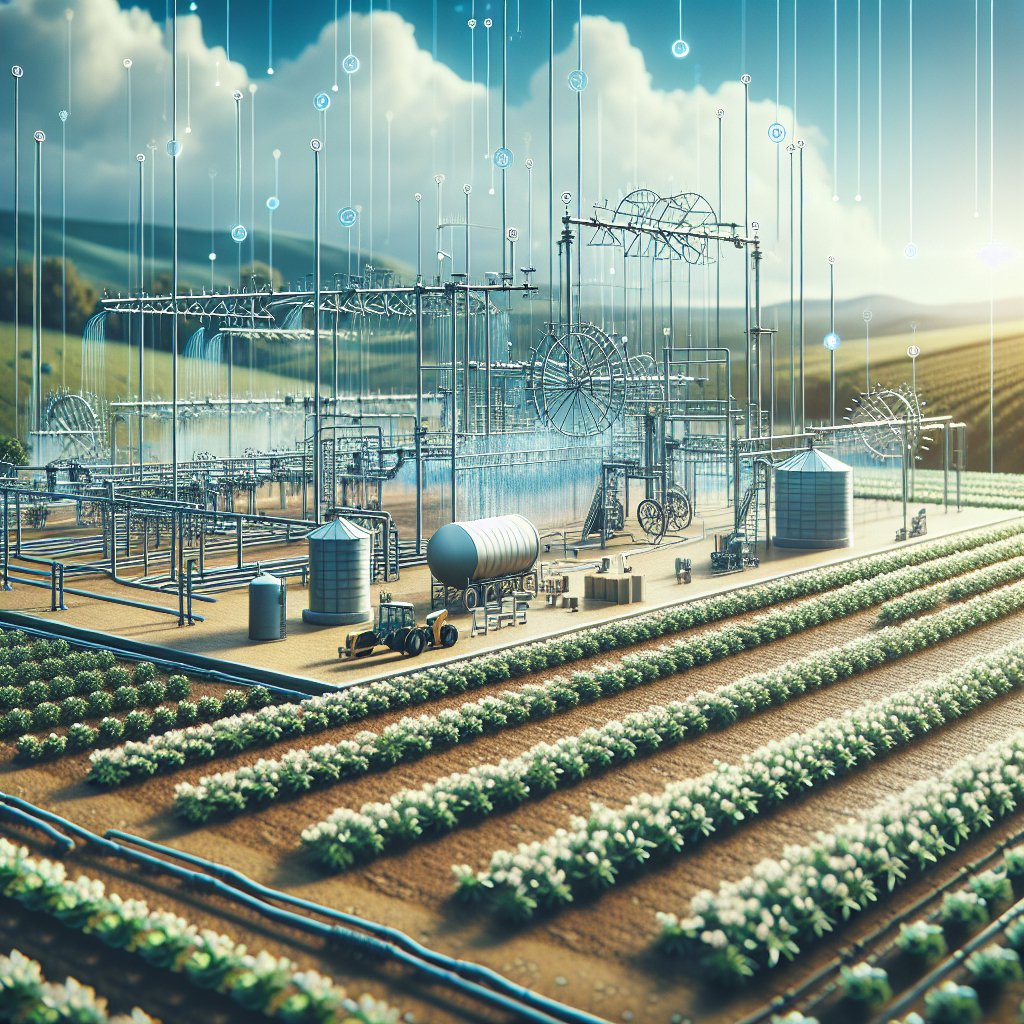
Setting up an efficient farm irrigation system is crucial for maximizing crop yield and conserving water resources. As the global population continues to grow, the demand for food increases, making efficient irrigation systems more important than ever. This article will explore the key components of an efficient irrigation system and provide guidance on how to implement one on your farm.
Understanding the Basics of Farm Irrigation
Before diving into the specifics of setting up an irrigation system, it’s essential to understand the basic principles of farm irrigation. Irrigation is the artificial application of water to soil, which helps in growing agricultural crops, maintaining landscapes, and revegetating disturbed soils. The primary goal of irrigation is to provide plants with the necessary water to grow, especially in areas where rainfall is insufficient.
There are several types of irrigation systems, each with its own advantages and disadvantages. The most common types include surface irrigation, drip irrigation, sprinkler irrigation, and subsurface irrigation. Choosing the right system depends on various factors, including the type of crops being grown, the size and topography of the farm, and the availability of water resources.
Surface Irrigation
Surface irrigation is one of the oldest and most traditional methods of irrigation. It involves the distribution of water over the soil surface by gravity. This method is suitable for flat or gently sloping fields and is often used for crops like rice, which require large amounts of water. However, surface irrigation can be inefficient due to water loss through evaporation and runoff.
Drip Irrigation
Drip irrigation is a highly efficient method that delivers water directly to the plant’s root zone through a network of valves, pipes, tubing, and emitters. This system minimizes water loss and is ideal for arid regions or areas with limited water supply. Drip irrigation is particularly beneficial for high-value crops such as fruits and vegetables.
Sprinkler Irrigation
Sprinkler irrigation mimics natural rainfall by spraying water over the crops through a system of pipes and sprinklers. This method is versatile and can be used on various types of terrain and crops. However, it can be less efficient in windy conditions, as water may be lost to evaporation and drift.
Subsurface Irrigation
Subsurface irrigation involves the application of water below the soil surface, directly to the root zone. This method reduces water loss due to evaporation and is suitable for areas with high evaporation rates. Subsurface irrigation systems can be more complex and costly to install but offer long-term water savings.
Steps to Set Up an Efficient Irrigation System
Setting up an efficient irrigation system requires careful planning and consideration of various factors. Here are the key steps to follow:
1. Assess Water Availability
The first step in setting up an irrigation system is to assess the availability of water resources. This includes evaluating the quantity and quality of water available from sources such as rivers, lakes, wells, or municipal supplies. Understanding water availability will help determine the most suitable irrigation method and system design.
2. Analyze Soil and Crop Requirements
Different crops have varying water requirements, and soil types can affect water retention and drainage. Conduct a soil analysis to determine its texture, structure, and water-holding capacity. This information will help in selecting the appropriate irrigation system and scheduling irrigation to meet crop needs.
3. Design the Irrigation System
Designing an efficient irrigation system involves selecting the right components and layout. Consider factors such as field size, shape, slope, and crop type. The design should ensure uniform water distribution and minimize water loss. Work with an irrigation specialist if necessary to create a detailed plan.
4. Install the System
Once the design is finalized, proceed with the installation of the irrigation system. This includes setting up pumps, pipes, valves, and emitters or sprinklers. Ensure that all components are installed correctly and that the system is tested for leaks and proper functioning.
5. Implement a Maintenance Plan
Regular maintenance is essential to keep the irrigation system running efficiently. This includes checking for leaks, cleaning filters, and ensuring that all components are functioning correctly. Implement a maintenance schedule and train farm staff on proper system operation and upkeep.
Maximizing Efficiency and Sustainability
In addition to setting up an efficient irrigation system, there are several practices that can help maximize water use efficiency and promote sustainability:
- Use of Sensors and Automation: Implementing soil moisture sensors and automated irrigation controllers can optimize water use by applying water only when needed.
- Rainwater Harvesting: Collecting and storing rainwater can supplement irrigation needs and reduce reliance on external water sources.
- Crop Rotation and Diversification: Rotating crops and diversifying plantings can improve soil health and reduce water demand.
- Mulching: Applying mulch around plants can reduce evaporation and maintain soil moisture.
- Education and Training: Providing education and training for farm workers on efficient water use practices can enhance system performance and sustainability.
By following these steps and practices, farmers can set up an efficient irrigation system that not only meets the water needs of their crops but also conserves valuable water resources. As climate change and population growth continue to impact global agriculture, efficient irrigation systems will play a critical role in ensuring food security and environmental sustainability.

